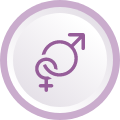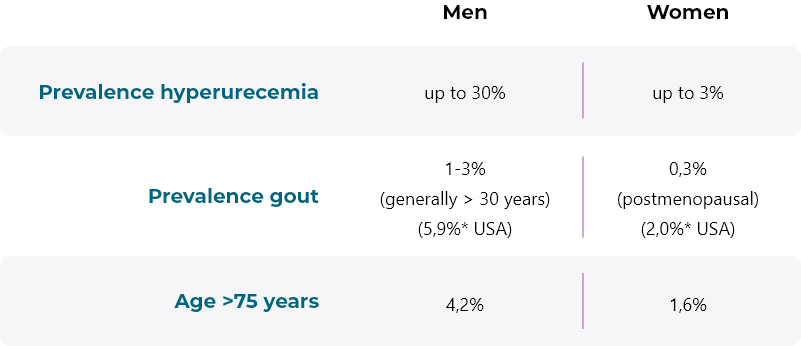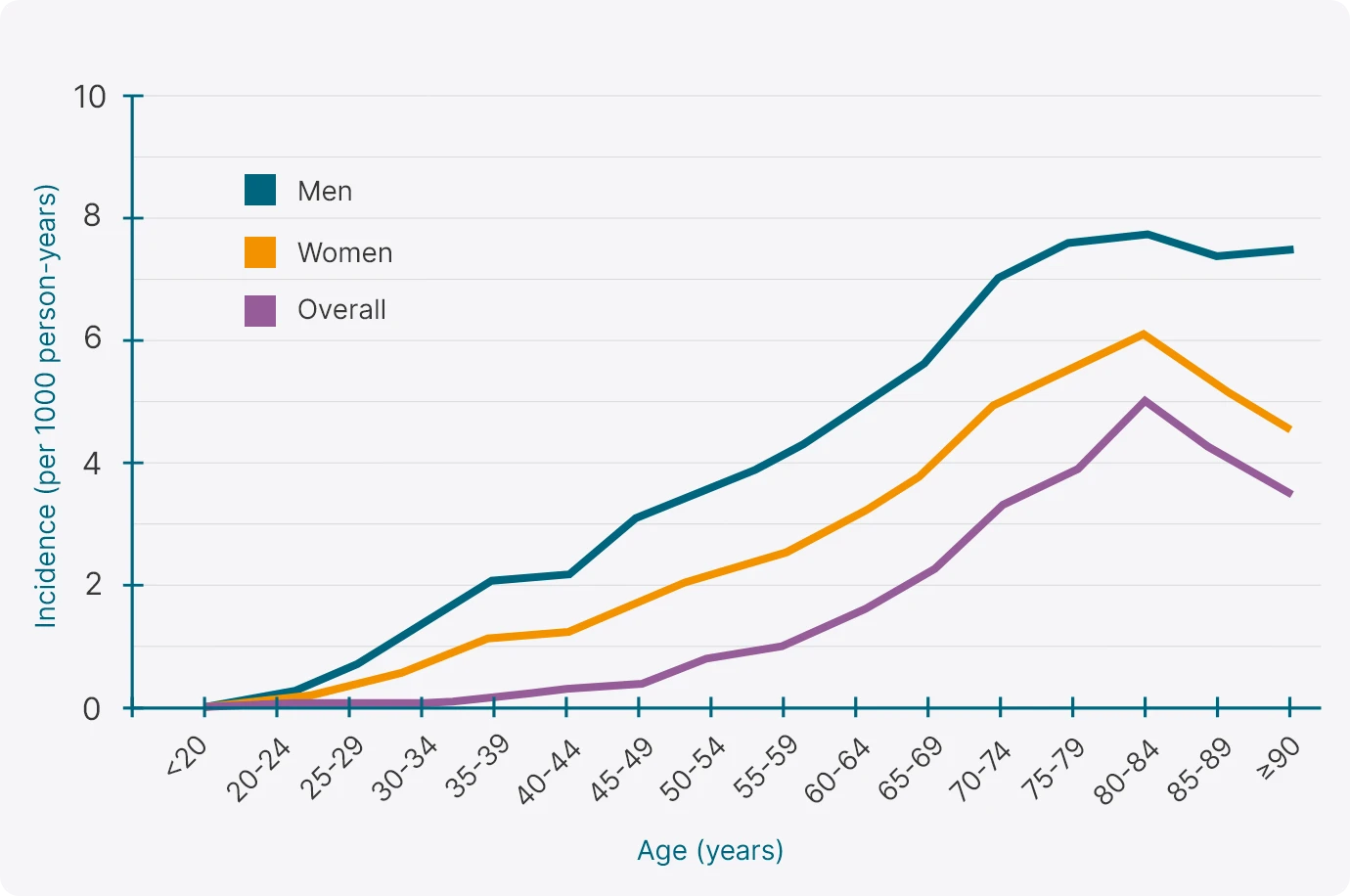

The global population of individuals with gout increased in the past 30 years from 22 million to 53 million1.

The sex ratio stayed consistent at 3:1 (male to female), but the gout incidence kept increasing over time1.

*Overall, rising worldwide and strongly age-dependent

The risk of gout is approximately threefold higher in men than in women. Adapted from Kuo, C.F. et al. Rising burden of gout in the UK but continuing suboptimal management: a nationwide population study. Ann. Rheum.
Dis. http://dx.doi.org/10.1136/annrheumdis-2013-20446339 @2014, with permission from BMJ Publishing Group Ltd.